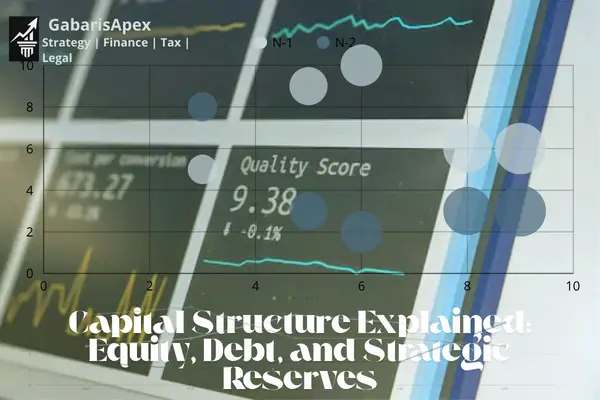Capital Structure: Understanding Equity, Debt, and Reserves
Capital structure represents the way a company finances its operations and growth through various sources, mainly equity, debt, and internal reserves. An optimal capital structure balances risk and return while ensuring financial stability.
1. Equity Capital
Equity is the ownership interest in a company. It includes:
- Common stock: basic ownership with voting rights.
- Preferred shares: hybrid instruments with fixed dividends and priority in liquidation.
- Additional paid-in capital and retained earnings.
Equity financing does not require repayment but dilutes ownership and may increase dividend obligations.
2. Debt Capital
Debt includes all borrowed funds that must be repaid over time with interest. Common types include:
- Bank loans and credit lines.
- Corporate bonds and debentures.
- Convertible debt instruments.
Debt allows for leveraged growth but increases financial risk, especially when interest rates rise.
3. Legal and Discretionary Reserves
Reserves are part of equity and serve as internal sources of capital:
- Legal reserves: often required by law to protect creditors and ensure company solvency.
- Discretionary reserves: set aside voluntarily for future investments or risk management.
Reserves improve financial resilience and are considered a sign of prudent management.
Conclusion
A sound capital structure requires balancing equity and debt while maintaining sufficient reserves. Each component affects risk, control, and profitability. Strategic capital management is essential for sustainable growth and investor confidence.
Note: JetCapitals is an educational platform focused on financial strategy, taxation, and executive decision-making. All content is for informational purposes only and does not constitute investment advice or brokerage services.

Enregistrer un commentaire